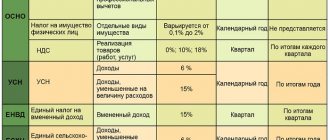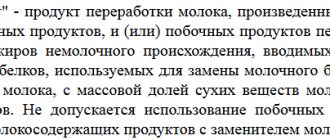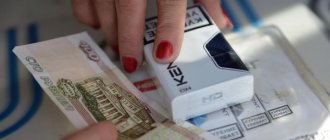What counts as implementation?
Goods are considered sold if the ownership of them has passed from the seller to the buyer (Clause 1, Article 39 of the Tax Code of the Russian Federation).
For the purposes of calculating excise taxes, the following operations are considered to be sales:
- gratuitous transfer of ownership of excisable goods or the use of excisable goods with payment in kind (subclause 1, clause 1, article 182 of the Tax Code of the Russian Federation);
- shortage of excisable goods in excess of the norms of natural loss (clause 4 of article 195 of the Tax Code of the Russian Federation).
Why is it needed?
Most buyers are not interested in what symbols to look for on the bottle they are buying. In fact, they are not glued to everything that is stronger than 4%. They are not prescribed for beer, poire, mead, or cider. The federal law that defines the procedure for applying the excise tax was adopted in 1995.
This sticker confirms the authenticity of the product and the legality of its sale. This way you can determine whether the wine, cognac is real or fake.
What does he pay for?
Payers of excise tax on alcohol are companies, entrepreneurs and persons sending alcohol through customs. The tax is paid by manufacturers using ethyl alcohol of all varieties. It can be food grade, cognac, wine, grape or anhydrous. If ethyl alcohol is used to create medicines, the manufacturer also pays excise tax.
Law firms selling goods wholesale do not have any obligation to pay excise tax. Departments and divisions of such companies do not become participants in taxation.
Export of alcohol in the customs zone of the country is subject to excise tax. These are companies that produce, process and import alcohol. But not only the sale and production of alcohol is subject to tax.
The list of situations for the occurrence of obligations to pay excise taxes on alcohol is supplemented:
- transfer of alcohol products to the authorized capital of the company by the manufacturer;
- sale of alcohol confiscated by the court and sold.
There is no excise duty when purchasing alcohol in a store. Tax obligations arise before the product even hits the shelf.
When to charge excise tax
When selling (transferring) excisable goods, accrue excise tax on the day of shipment (transfer) to the buyer (recipient) of the goods (clause 2 of Article 195 of the Tax Code of the Russian Federation, letter of the Ministry of Finance of Russia dated January 14, 2010 No. 03-07-06/03).
If an organization sells goods at retail, then the date of sale for the purposes of calculating excise taxes is the date of transfer of goods to the division that carries out retail sales (clause 2 of Article 195 of the Tax Code of the Russian Federation).
An exception is the case of the sale of goods pledged if they have been in the possession of the pledgee since the conclusion of the pledge agreement. In this case, excise tax can be charged only after a public auction. This is explained by the fact that when concluding a pledge agreement, goods are transferred to the pledgee not for the purpose of sale (Article 337 of the Civil Code of the Russian Federation).
If the obligation to pay excise duty is related to the discovery of a shortage of goods, the date of sale is the date the shortage was discovered. At the same time, excise tax is imposed on the quantity of missing goods that exceeds the norms of natural loss (clause 4 of Article 195 of the Tax Code of the Russian Federation).
For transactions of transfer of goods produced from customer-supplied raw materials, excise duty is charged on the date of signing the acceptance certificate for such goods (Clause 2 of Article 195 of the Tax Code of the Russian Federation).
Accrue excise tax on all transactions, the date of implementation (transfer) of which relates to the current month (clause 5 of Article 194, Article 192 of the Tax Code of the Russian Federation).
Situation: at what point should excise tax be charged when selling goods through an intermediary?
When selling goods under intermediary agreements, accrue excise tax at the time of transfer of goods to the intermediary.
It is explained this way.
When selling manufactured excisable goods, an object of excise taxation arises (subclause 1, clause 1, article 182 of the Tax Code of the Russian Federation).
The sale of goods is recognized as the transfer of ownership of goods (on a compensated or gratuitous basis) from one person to another (clause 1 of Article 39 of the Tax Code of the Russian Federation). That is, in general, the date of sale is considered to be the date of transfer of ownership.
At the same time, for the purposes of calculating excise taxes, the date of sale of excisable goods is defined as the day of their shipment (transfer) (clause 2 of Article 195 of the Tax Code of the Russian Federation).
Thus, if the terms of the agreement provide for the transfer of ownership, excise duty must be charged on the date of shipment of goods as part of the execution of such an agreement, regardless of the date of transfer of ownership or the date of payment. This conclusion is confirmed by the letter of the Ministry of Finance of Russia dated January 14, 2010 No. 03-07-06/03.
When selling goods through intermediaries, ownership of the goods remains with the manufacturer until they are sold by the intermediary (Clause 1, Article 996, Article 1011 of the Civil Code of the Russian Federation). However, they are transferred to an intermediary for the purpose of their sale, as a result of which ownership from the manufacturer will pass directly to the buyer.
Calculation of excise tax on tobacco products
The taxpayer submits a return monthly before the 25th. For actual goods sold. Pays in one lump sum or in advance and final payment. The excise duty is paid by the 25th of the next reporting period, the advance is paid by the 15th of the current month. When exporting and importing alcohol, excise duty is paid in the next tax period.
Once the excise tax rate has been determined, calculate the tax base for each type of excisable goods. Currently, for all excisable goods (except for cigarettes and cigarettes), the tax base is determined as the volume of sold (transferred) excisable goods in kind. In this case, the volume of excisable goods sold should be calculated in those units of measurement that are indicated in the excise tax rate.
This procedure follows from the provisions of Article 187 of the Tax Code of the Russian Federation.
If an organization sells goods of the same type, but with different excise tax rates, determine the tax base separately for each subtype of products sold (transferred), in relation to each rate (clause 1 of Article 190 of the Tax Code of the Russian Federation). To do this, it is necessary to maintain separate records (clause 2 of Article 190 of the Tax Code of the Russian Federation). If maintaining such records is impossible, tax all sold (transferred) products at a single tax rate.
An example of determining the tax base for excise duty when selling one type of product for which different tax rates are established
Alpha LLC produces beer of various strengths. Thus, Alpha’s assortment includes the following varieties:
- non-alcoholic beer (with a volume fraction of ethyl alcohol up to 0.5 percent);
- beer (with a volume fraction of ethyl alcohol from 0.5 to 8.6 percent);
- strong beer (with a volume fraction of ethyl alcohol over 8.6 percent).
Each of these three groups of beer has different excise tax rates.
If Alpha keeps separate records of beer transactions across these three groups, then to calculate the excise tax it must determine three tax bases and apply the appropriate rates to them.
If Alpha does not maintain separate accounting, it will have to determine a single tax base for beer. Then calculate the excise tax based on the maximum excise tax rate provided for beer (37 rubles per 1 liter).
An example of determining the tax base for the sale of excisable goods for which a fixed excise tax rate has been established
Alpha LLC produces beer. In July, the organization sold 500 bottles of beer (with an alcohol content of 0.5 to 8.6 percent by volume). Of the total number of beer bottles sold, 400 bottles were 0.5 liters and 100 bottles were 0.33 liters. The contractual cost of goods sold is 23,600 rubles. (including VAT - 3600 rubles, excise tax - 3495 rubles). The excise tax rate for beer with an alcohol content by volume from 0.5 to 8.6 percent is set at 20 rubles. for 1 l.
Alpha's accountant made the following entries in the accounting.
Debit 62 Credit 90-1– 23,600 rub. – revenue from beer sales is reflected;
Debit 90-3 Credit 68 subaccount “VAT calculations” – 3600 rubles. – VAT is charged on sales proceeds;
Debit 90-4 subaccount “Excise taxes” Credit 68 subaccount “Calculations for excise taxes” – 4660 rubles. ((400 bottles × 0.5 l 100 bottles × 0.33 l) × 20 rub./l) – excise tax is charged on the sale of beer.
When selling cigarettes and cigarettes, the tax base consists of two parts and is defined as:
- the volume of goods sold (transferred) in kind – for the application of a fixed tax rate;
- the estimated value of these goods is for the application of the ad valorem tax rate.
This procedure is provided for in paragraph 2 of Article 187 and Article 193 of the Tax Code of the Russian Federation.
| Estimated cost of goods sold (transferred) | = | Maximum retail price indicated on a pack of cigarettes or cigarettes | × | Number of cigarettes or cigarettes sold or transferred during the tax period (in packs) |
An example of determining the estimated cost of cigarettes sold. During the tax period, two brands of cigarettes were sold
Alpha LLC produces filter cigarettes of two brands: Balkan and Zvezda.
In July, the organization sold cigarettes of both brands in the following quantities:
- “Balkan” brand – 75,000 cigarettes (3,750 packs);
- “Zvezda” brand – 37,000 cigarettes (1,850 packs).
Packs of Balkan cigarettes sold in July had a maximum retail price of 50 rubles. On packs of Zvezda brand cigarettes – 55 rubles.
To calculate the excise tax, Alpha's accountant determined the estimated cost for each brand of cigarettes sold in July:
- “Balkan” – 3750 packs × 50 rubles. = 187,500 rub.;
- “Star” – 1850 packs × 55 rubles. = 101,750 rub.
There is one excise tax rate for all filter cigarettes. Therefore, the accountant calculated the total estimated cost of filter cigarettes sold in July: RUB 187,500. RUB 101,750 = 289,250 rub.
An example of determining the estimated cost of cigarettes sold. During the tax period, cigarettes of the same brand were sold with different maximum retail prices
Alpha LLC produces filter cigarettes of one brand. In August, the organization sold 100,000 filter cigarettes (5,000 packs).
From August 1, based on the notice on produced packs of cigarettes, Alpha indicates the maximum retail price of 60 rubles.
During August, Alfa sold both cigarettes produced in August and cigarettes produced in July. In July, Alpha indicated on cigarette packs the maximum retail price of 57 rubles.
The number of cigarettes sold in April that were produced in July is 20,000 pieces (1,000 packs).
The estimated cost of cigarettes with a maximum retail price of 57 rubles. is: – 57 rub. × 1000 packs = 57,000 rub.
The number of cigarettes that were both produced and sold in August was 80,000 pieces (4,000 packs). Their estimated cost is: – 60 rubles. × 4000 packs = 240,000 rub.
Thus, the estimated cost of cigarettes sold by Alfa in August is: – 57,000 rubles. 240,000 rub. = 297,000 rub.
Once the tax base is determined, calculate the amount of excise tax.
| Excise tax amount (fixed rate) | = | Volume of goods sold (in units of measurement specified in the excise tax rate) | × | Excise tax rate per unit of excise tax measurement |
This procedure is provided for in paragraph 1 of Article 194 of the Tax Code of the Russian Federation.
An example of excise tax calculation for the sale of excisable goods for which fixed excise tax rates are established
Alpha LLC is engaged in the production of alcoholic beverages with a volume fraction of ethyl alcohol of more than 9 percent.
The excise tax rate for alcoholic products with a volume fraction of ethyl alcohol of more than 9 percent is set at 500 rubles. for 1 liter of anhydrous ethyl alcohol contained in excisable goods.
In June, Alpha purchased 200 liters of anhydrous ethyl alcohol for use in production at a cost of 11,800 rubles. (including VAT - 1800 rubles) Previously (in May), the organization transferred to the budget an advance payment of excise tax for purchased alcohol (clause 6 of Article 204 of the Tax Code of the Russian Federation). The amount of the advance payment was 100,000 rubles. (200 l × 500 rubles) (paragraph 5, paragraph 8, article 194 of the Tax Code of the Russian Federation).
Alpha uses the purchased alcohol to produce liqueur with a volume fraction of ethyl alcohol of 14 percent. In June, Alpha produced 2,000 0.7-liter bottles of liqueur. The volume of alcohol used was: 2000 bottles. × 0.7 l × 14% = 196 l.
In July, the finished products were fully sold. The contract price of goods sold is 180,000 rubles. (including VAT - 18% and excise tax).
When calculating the excise tax, the Alpha accountant does not rely on the volume of alcoholic beverages sold, but on the amount of anhydrous ethyl alcohol contained in it.
The amount of excise tax for July will be: 2000 bottles. × 0.7 l × 14% × 500 rub./l = 98,000 rub.
Alpha's accountant made the following entries in accounting (transactions related to the production of finished products are not considered).
Debit 68 subaccount “Calculations for advance payments of excise duty” Credit 51–100,000 rub. – advance payment of excise tax is transferred (before purchasing alcohol).
Debit 10 Credit 60–10,000 rub. – alcohol is credited;
Debit 19 Credit 60–1800 rub. – VAT presented by the alcohol supplier is reflected;
Debit 68 subaccount “Calculations for VAT” Credit 19–1800 rub. – accepted for deduction of VAT on alcohol.
Debit 62 Credit 90-1– 180,000 rub. – revenue from the sale of liquor is reflected;
Debit 90-3 Credit 68 subaccount “VAT calculations” – 27,457.63 rubles. (RUB 180,000 × 18/118) – VAT is charged on sales proceeds;
Debit 90-4 subaccount “Excise taxes” Credit 68 subaccount “Calculations for excise taxes” – 98,000 rubles. – excise tax is charged on the sale of liquor;
Debit 68 subaccount “Calculations for excise taxes” Credit 68 subaccount “Calculations for advance payments of excise taxes” - 98,000 rubles. – advance payment of excise tax is credited.
The amount of the advance payment of excise tax on alcohol within the amount of excise tax accrued on sold products is accepted by Alpha for deduction (clause 16 of Article 200 of the Tax Code of the Russian Federation). Since the advance payment exceeds the amount of excise tax accrued upon sale, at the end of July Alfa does not pay excise tax to the budget.
The remaining part of the advance payment of excise tax, not accepted for deduction in July (2,000 rubles = 100,000 rubles - 98,000 rubles), will be accepted by the Alpha accountant for deduction in subsequent tax periods in which the purchased ethyl alcohol will be used for the production of liquor - vodka products with a volume fraction of ethyl alcohol of more than 9 percent.
| Excise tax amount (combined rate) | = | Excise tax amount calculated at a fixed rate | Excise tax amount calculated at ad valorem rate |
| Excise tax amount (ad valorem component of excise tax at a combined rate) | = | Estimated cost of goods sold (transferred) | × | Excise tax rate |
The amount of excise tax calculated in this way must be compared with the minimum amount of excise tax. The minimum amount is set in the tax rate. The larger of the specified amounts must be paid to the budget.
This procedure follows from the provisions of Articles 193 and 194 of the Tax Code of the Russian Federation. Similar clarifications are contained in the letter of the Ministry of Finance of Russia dated July 19, 2012 No. 03-07-06/187.
New excise stamps for alcohol
1. Labeling of alcoholic products imported (imported) into the Russian Federation with excise stamps is carried out before its import into the Russian Federation and after receiving confirmation of recording information about the specified alcoholic products applied to the excise stamp in the unified state automated information system for recording the volume of production and turnover of ethyl alcohol alcohol, alcoholic and alcohol-containing products.
(as amended by Resolutions of the Government of the Russian Federation dated 01/08/2009 N 2, dated 07/27/2012 N 776)
(see text in previous)
a) providing the ability to read information about the alcoholic products they label using technical means of the unified state automated information system for recording the volume of production and turnover of ethyl alcohol, alcoholic and alcohol-containing products during the entire period that alcoholic products are in circulation;
b) excluding the possibility of their counterfeiting and reuse.
with the inscription “Alcohol products up to 9% inclusive” - for alcoholic products with an ethyl alcohol content of up to 9 percent of the volume of finished products inclusive, with the exception of alcoholic products, which are subject to affixing excise stamps with the inscriptions “Wines”, “Natural wines”, “Wines” champagnes and sparkling wines";
with the inscription “Alcohol products over 9 to 25%” - for alcoholic products with an ethyl alcohol content of 9 to 25 percent of the finished product volume inclusive, with the exception of wines, liqueur wines, fruit wines, sparkling (champagne) wines and wine drinks;
with the inscription “Alcohol products over 25%” - for alcoholic products with an ethyl alcohol content of over 25 percent and up to 95 percent of the volume of finished products inclusive;
with the inscription “Wines” - for liqueur and fruit wines, as well as wine drinks;
with the inscription “Natural wines” - for alcoholic products with an ethyl alcohol content of 4.5 percent to 16.5 percent of the volume of finished products inclusive, with the exception of fruit wines, liqueur wines and sparkling (champagne) wines;
with the inscription “Champagne and sparkling wines” - for sparkling (champagne) wines;
with the inscription “up to 0.1 liter” - for vodka and strong alcoholic drinks with an ethyl alcohol content of more than 25 percent of the volume of finished products, the volume of which in consumer packaging is up to 0.1 liter inclusive;
with the inscription “up to 0.25 l” - for vodka and spirits with an ethyl alcohol content of more than 25 percent of the volume of finished products, the volume of which in consumer packaging ranges from 0.1 liter to 0.25 liters inclusive;
with the inscription “up to 0.5 liters” - for vodka and strong alcoholic drinks with an ethyl alcohol content of more than 25 percent of the volume of finished products, the volume of which in consumer packaging ranges from 0.25 liters to 0.5 liters inclusive;
with the inscription “up to 0.75 l” - for vodka and spirits with an ethyl alcohol content of more than 25 percent of the volume of finished products, the volume of which in consumer packaging ranges from 0.5 liters to 0.75 liters inclusive;
with the inscription “up to 1 liter” - for vodka and spirits with an ethyl alcohol content of more than 25 percent of the volume of finished products, the volume of which in consumer packaging ranges from 0.75 liters to 1 liter inclusive;
with the inscription “over 1 liter” - for vodka and strong alcoholic drinks with an ethyl alcohol content of more than 25 percent of the volume of finished products, the volume of which in consumer packaging is more than 1 liter.
(P.
Results
Excise taxes on alcoholic beverages increase annually.
In 2016–2017, excise taxes were again indexed compared to the previous period as part of the state’s excise policy aimed at replenishing the budget, and taking into account the need to preserve the health of citizens from the harmful use of alcohol. You can find more complete information on the topic in ConsultantPlus. Free trial access to the system for 2 days.
Excise tax on alcohol in 2018: what are they, rate, cost calculation formula
3 in ed. Decree of the Government of the Russian Federation dated July 27, 2012 N 776)
with the inscription “Strong alcoholic drinks” - for alcoholic products with an ethyl alcohol content of more than 25 percent of the volume of the finished product;
with the inscription “Vodka” - for vodka with an ethyl alcohol content from 38 percent to 56 percent of the volume of the finished product, inclusive;
with the inscription “Alcoholic drinks up to 9%” - for alcoholic products with an ethyl alcohol content of up to 9 percent of the finished product volume inclusive, with the exception of wines, fruit wines and wine drinks;
with the inscription “Alcoholic drinks over 9 to 25%” - for alcoholic products with an ethyl alcohol content of over 9 percent and up to 25 percent of the volume of finished products inclusive, with the exception of wines, fruit wines, liqueur wines, sparkling (champagne) wines and wine drinks;
with the inscription “Sparkling (champagne) wines” - for sparkling (champagne) wines;
with the inscription “Liqueur wines” - for liqueur wines;
with the inscription “Fruit wines” - for fruit wines;
with the inscription “Wine drinks” - for wine drinks;
with the inscription “Grape wines” - for alcoholic products with an ethyl alcohol content of 4.5 percent to 16.5 percent of the volume of finished products inclusive, with the exception of fruit wines, liqueur wines and sparkling (champagne) wines;
with the inscription “up to 0.375 liters” - for grape wines, sparkling (champagne) wines, liqueur wines, fruit wines and wine drinks, the volume of which in consumer packaging is up to 0.375 liters inclusive;
with the inscription “up to 0.75 l” - for vodka, strong alcoholic drinks with an ethyl alcohol content of more than 25 percent of the finished product volume, grape wines, sparkling (champagne) wines, liqueur wines, fruit wines and wine drinks, the volume of which is in consumer packaging ranges from 0.5 liters to 0.75 liters inclusive;
with the inscription “over 1 liter” - for vodka and strong alcoholic drinks with an ethyl alcohol content of more than 25 percent of the volume of finished products, the volume of which in consumer packaging is more than 1 liter;
with the inscription “up to 1.5 liters” - for grape wines, sparkling (champagne) wines, liqueur wines, fruit wines and wine drinks, the volume of which in consumer packaging ranges from 0.75 liters to 1.5 liters inclusive;
with the inscription “over 1.5 liters” - for grape wines, sparkling (champagne) wines, liqueur wines, fruit wines and wine drinks, the volume of which in consumer packaging is over 1.5 liters.
(P.
3(1) introduced by Decree of the Government of the Russian Federation dated July 27, 2012 N 776)
4. Excise stamps containing information about the special economic zone must be applied to alcoholic products imported into the territory of the special economic zone created on the territory of the Russian Federation in accordance with federal laws.
5. Responsible for labeling alcoholic beverages with excise stamps in the prescribed manner are the organizations that purchased the excise stamps.
| List of changing documents |
(as amended by Resolutions of the Government of the Russian Federation dated 01/08/2009 N 2,
dated July 27, 2012 N 776)
3 in ed. Decree of the Government of the Russian Federation dated July 27, 2012 N 776)
Alpha LLC produces filter cigarettes of one brand. In May, the organization sold 100,000 filter cigarettes (5,000 packs). All packs of cigarettes sold by Alfa in February had the same maximum retail price of 60 rubles.
For filter cigarettes the following excise tax rate is established: RUB 1,250. for 1000 pcs. 12.0% of the estimated cost, determined based on the maximum retail price (but not less than 1,680 rubles per 1,000 pcs.).
This is the combined excise tax rate. Therefore, when calculating the excise tax for May, the Alpha accountant separately determines the tax base for the application of a fixed excise tax rate and the tax base for the application of an ad valorem excise tax rate.
Alpha's accountant calculated the amount of excise duty at a fixed rate: - 100,000 pcs. × 1250 rub.: 1000 pcs. = 125,000 rub.
After this, the Alpha accountant calculated the tax base for applying the ad valorem rate: - 60 rubles. × 5000 packs = 300,000 rub.
and the amount of excise tax at an ad valorem rate: – 300,000 rubles. × 12.0% = 36,000 rub.
The total amount of excise tax was: – 125,000 rubles. 36,000 rub. = 161,000 rub.
The total excise tax per 1000 cigarettes should not be less than 1680 rubles. To ensure compliance with this rule, the accountant calculated the amount of excise tax on 1000 units of cigarettes sold: 161,000 rubles. : 100,000 pcs. × 1000 pcs. = 1610 rub.
The amount received is less than the minimum established excise tax on filter cigarettes. Consequently, the amount of excise tax payable to the budget by Alfa is equal to the minimum established amount - 168,000 rubles.
Debit 62 Credit 90-1– 300,000 rub. (60 rubles × 5000 packs) – revenue from the sale of cigarettes is reflected;
Debit 90-3 Credit 68 subaccount “VAT Calculations” – RUB 38,135.59. (RUB 300,000: 118 × 18) – VAT is charged on sales proceeds;
Debit 90-4 subaccount “Excise taxes” Credit 68 subaccount “Calculations for excise duties” – 168,000 rubles. – excise tax is charged on the sale of cigarettes.
Every year or every few years, the tax rate on popular excisable goods increases. The excise tax on alcoholic products in 2018 does not differ from the rate in 2021. The government of the country sets excise taxes on alcohol. The updated version of the Tax Code with amendments to rates is published on January 1 of each year.
| Product type | Excise tax amount | ||
| 2018 | 2019 | 2020 | |
| Alcohol with ethyl alcohol content less than 9% | 418 rubles liter | 418 rubles liter | 435 rubles liter |
| Alcohol with an ethyl alcohol content of more than 9% | 523 rubles liter | 523 rubles liter | 544 rubles liter |
| Sparkling wine | 36 rubles liter | 36 rubles liter | 37 rubles liter |
| Sparkling wines with protected geographical indication | 14 rubles liter | 14 rubles liter | 14 rubles liter |
| Wines with Protected Geographical Indication | 5 rubles liter | 5 rubles liter | 5 rubles liter |
| Fruit wines | 18 rubles liter | 18 rubles liter | 19 rubles liter |
| Ethyl alcohol, which is sold by companies that do not pay advance excise taxes | 107 rubles liter | 107 rubles liter | 111 rubles liter |
The 2021 ethyl alcohol excise tax will change in 2021 and 2021. In 2021, the 2021 alcohol excise tax rate remains the same. The systematic increase in rates applies to popular categories of alcoholic beverages. The excise tax on vodka is the highest of all alcoholic beverages and it continues to grow. The government is fighting the alcohol addiction of citizens by increasing the cost of alcohol, increasing the indirect tax.
Business Solutions
- shops clothing, shoes, groceries, toys, cosmetics, appliances Read more
- warehouses
material, in-production, sales and transport organizations Read more
- marking
tobacco, shoes, consumer goods, medicines Read more
- production
meat, procurement, machining, assembly and installation Read more
- rfid
radio frequency identification of inventory items More details
- egais
automation of accounting operations with alcoholic beverages Read more
The documentation must contain:
- Product Name;
- volume of one unit;
- type, alcohol concentration;
- manufacturer's name, legal address and place of production;
- if the consignment was imported from abroad, then the details of the importer are indicated;
- the state in which the product is manufactured;
- mandatory confirmation of compliance with quality requirements.
What does an alcohol excise stamp look like: why do you need a series and number?
This is a graphic design printed on thick rectangular self-adhesive paper. To protect against counterfeiting, special elements are used - translucent threads, signs, color changes in the sun.
These symbols are constantly being refined and changed, supplemented with new means. They can only be obtained in Moscow or Perm at Gosznak.
The old stickers were light blue, the new ones are light green. If the excise tax is genuine, then the inscription “РВ” will alternate on the holographic part of the foil with a double-headed eagle.
The name on the label and the displacement must completely coincide with what is indicated on the stamp. If you look at it at an angle, you will notice streaks of pink and gray appearing.
How to calculate the amount of excise tax
There are currently three types of bets:
- solid, or as they are often called specific;
- ad valorem;
- combined.
A flat rate is expressed as a fixed amount per unit of production. They are used to determine almost all excisable goods, except tobacco products.
To calculate the amount of excise tax, it is necessary to multiply the corresponding tax rate by the tax base, expressed in physical terms and determined by the volume of excisable products sold.
Total volume=120,000*0.5=60,000 liters.
Note that the excise tax rate that should be applied is 21 rubles. per liter
Excise tax amount = 60,000*21=1,260,000 rub.
To calculate the ad valorem rate, it is necessary to take a certain percentage of the cost of excisable goods.
The amount of excise tax is determined as the product of the tax base and the ad valorem rate. The base is compiled on the basis of the cost of sold excisable goods, calculated on the basis of prices excluding VAT and excise tax. In Russia, this type of bet is not used.
The combined rate is determined by the sum of the flat and ad valorem rates. In Russia, this type of rate is used to determine the amount of excise taxes for tobacco products.
To determine the amount of excise taxes at the combined rate that must be paid to the budget, it is necessary to know the volume of products sold in physical terms, as well as the estimated cost of these products, calculated from the maximum retail value of the goods.
First, let's determine how many pieces were produced:
- 1 box = 50 blocks;
- 1 block = 10 packs;
- 1 pack = 20 pieces;
- 1 box = 50*10*20=10,000 pieces;
- 23,000 boxes = 10,000 *23,000 = 230,000,000 pieces.
RS = 112 * 10,000,000 = 1,120,000,000 rub.
1,562*1,120,000,000/1,000=1,749,440,000 rub.
1,749,440,000 14.5*1,120,000,000=1,911,840,000 rub.
As you can see, for calculations it is important to know and control the rates that are set annually by the Government.
It is important to correctly calculate the excise tax before submitting the declaration to the Tax Inspectorate. The taxpayer independently keeps records of products and is obliged to submit reliable calculations, otherwise he risks receiving a fine. Using the formula, we will figure out how to calculate the excise tax on alcohol.
Excise tax on alcohol = Number of products in liters for 1 month * Tax rate
240 * 523,380 * 18 = 132,360 rubles
240 * 544,380 * 19 = 137,780 rubles
The cost of excise taxes on alcohol due to the rate increase will be 5,420 rubles. For large corporations, such tax increases will not cause difficulties. Timely optimization will help continue business development. Globally, increasing the alcohol tax serves a good purpose - protecting the health of citizens. Alcohol increases in price and hits consumers' pockets.
Difference from VAT
Excise tax rates on vodka do not include value added taxes. These are completely different fees. The only thing they have in common is that by their nature they are both indirect. Let's imagine their differences:
- VAT is levied on a much larger number of products and items than excise taxes. Value added tax also applies to services. Only specific goods are excisable.
- Excise tax is a fairly significant burden on an entrepreneur or organization. As for VAT, this tax is not noticeable provided that deductions are properly completed.
- Excise tax rates are not offset to the same extent as the use of VAT deductions.
- Excise taxes have a significant impact on the profitability of the company, which cannot be said about VAT.
Registration of minimum and maximum prices
The organization does not have the right to sell tobacco products at a price below the minimum retail price and above the maximum (Clause 5, Article 13 of Law No. 15-FZ of February 23, 2013).
The maximum retail price is the price above which a pack of cigarettes or cigarettes cannot be sold to end consumers. This price must be indicated on the package. This is stated in paragraph 2 of Article 187.1 of the Tax Code of the Russian Federation.
The maximum retail price is set independently by the manufacturer for each brand (name) of cigarettes and cigarettes. Therefore, using the above formula, you need to determine the estimated cost for each brand (each name) of sold cigarettes or cigarettes. And then, if the excise tax rate on them is the same, add the resulting values to determine the final estimated cost. This follows from the provisions of Article 187 of the Tax Code of the Russian Federation.
Information from manufacturers on maximum retail prices for tobacco products is published on the official website of the Federal Tax Service of Russia.
The minimum retail price is 75 percent of the maximum retail price established by the manufacturer (clause 3 of article 13 of the Law of February 23, 2013 No. 15-FZ).
Situation: can an organization set different maximum retail prices for cigarettes of the same name? Cigarettes are sold in different regions, and the costs of their sale differ.
Yes, it can, if cigarettes of the same name, which are sold in different regions of Russia, are classified as different brands.
The maximum retail price, which must be indicated on a pack of cigarettes or cigarettes, is set by tobacco product manufacturers separately for each brand (clause 2 of Article 187.1 of the Tax Code of the Russian Federation). In this case, a brand is understood as an assortment position of tobacco products that differs from other brands in at least one of the following characteristics:
- presence or absence of a filter;
For example, cigarettes intended for sale in the Far North may differ from cigarettes of the same name sold in other regions in the color of the packaging. Changing packaging gives manufacturers the right to classify cigarettes of the same name as different brands. As a result, set different maximum retail prices for them.
Similar explanations are contained in the letter of the Ministry of Finance of Russia dated January 20, 2009 No. 03-07-06/4.
Attention: for the sale of cigarettes and cigarettes at a price exceeding the maximum retail price indicated on each package (pack), administrative liability is provided:
- for officials – a fine of 50,000 rubles. or disqualification for up to three years;
- for legal entities - a fine of two times the amount of excess revenue received as a result of the sale of cigarettes or cigarettes at a price higher than that indicated on the pack. Excess revenue received is determined for the entire period of sale of such goods, but not more than for 1 year (Part 1 of Article 14.6 of the Code of Administrative Offenses of the Russian Federation).
To establish the minimum and maximum retail prices, the manufacturer must submit to the tax office at the place of registration (customs authority at the place of declaration) a notification of the minimum and maximum retail prices for tobacco products.
The notification form for tax inspectorates (in relation to tobacco products produced in Russia), as well as the electronic format and procedure for filling out the form, were approved by Order of the Federal Tax Service of Russia dated March 28, 2014 No. ММВ-7-3/120.
The notification form for customs (for imported tobacco products) is not currently approved.
The notification must be submitted no later than 10 calendar days before the start of the tax period, starting from which the maximum retail prices indicated in the notification will be applied to the packaging.
The organization has the right to change the maximum retail price of cigarettes or cigarettes. To do this, you need to submit a new notification. The maximum retail prices indicated therein must be indicated on packs from the first day of the month following the date of submission of the notification, but not earlier than the expiration of the minimum validity period of the previous notification.
If an organization, by the beginning of the month from which new maximum retail prices are applied to packs, has unsold balances of cigarettes, then a situation may arise when tobacco products of the same name with different maximum retail prices are sold during the tax period. In such a case, the estimated value is determined in relation to each maximum retail price. Then the total estimated cost of sold cigarettes or cigarettes of this brand is determined.
This procedure follows from the provisions of Article 187.1 of the Tax Code of the Russian Federation.






